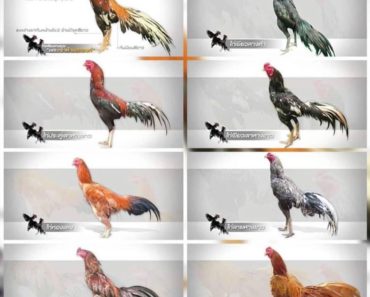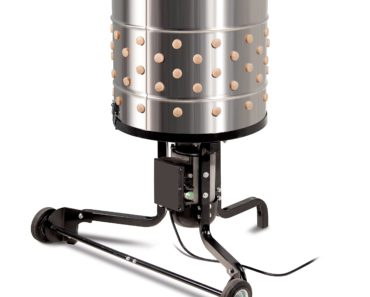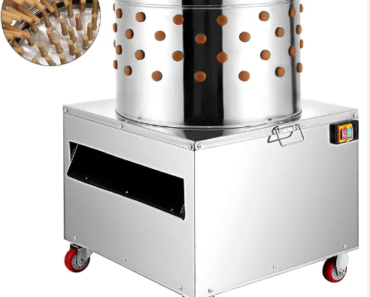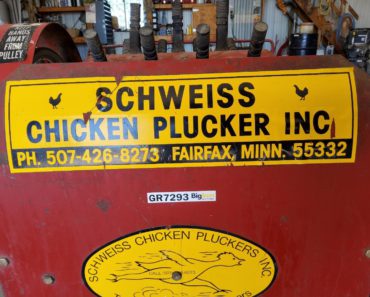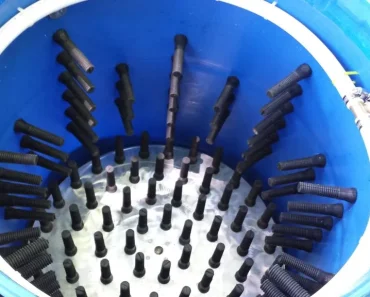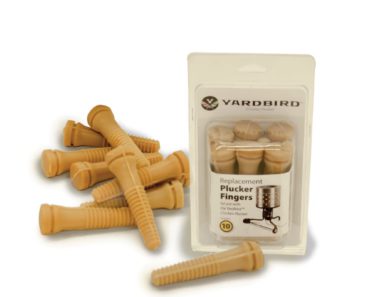Contents
- 1 The Ultimate Guide to Coops and More: Enhancing Your Chicken Plucking Experience
- 2 The Importance of Coops in Chicken Plucking
- 3 Exploring Different Types of Coops for Chicken Plucking
- 4 Maintenance Tips for Chicken Plucker Coops
- 5 FAQ
- 5.1 What are the key features to look for in a chicken plucker when setting up a coop?
- 5.2 How does a chicken plucker help improve efficiency and productivity in a chicken coop?
- 5.3 Are there any specific maintenance or cleaning requirements for a chicken plucker used in a coop environment?
- 5.4 Related Posts

Discover the Perfect Synthesis: Coops and More Chicken Plucker. Looking to streamline your chicken processing workflow? Our comprehensive guide explores the best coop designs and indispensable chicken pluckers that guarantee efficiency and convenience. Unlock the secrets to maximizing productivity while ensuring your feathered friends have a comfortable home.
The Ultimate Guide to Coops and More: Enhancing Your Chicken Plucking Experience
Welcome to “The Ultimate Guide to Coops and More: Enhancing Your Chicken Plucking Experience”! This comprehensive guide aims to provide you with valuable insights and tips to elevate your chicken plucking game. Whether you are a seasoned professional or just starting out, this guide has something for everyone.
Why is a well-designed coop important?
A well-designed coop is essential for the comfort and safety of your chickens. It provides them with a secure space to live and lay eggs. With our expert advice, you will learn how to create a coop that optimizes ventilation, lighting, and insulation to ensure your birds thrive.
The importance of proper plucking techniques
Efficient and effective plucking techniques not only save time but also result in higher quality poultry products. Our guide will teach you the best practices for achieving clean plucks without damaging the skin. We’ll cover everything from scalding temperatures to plucking machine maintenance.
Choosing the right plucking equipment
Picking the right plucking equipment is crucial for a successful chicken plucking experience. We’ll explore the different types of pluckers available on the market, from manual hand pluckers to high-speed automatic ones. Our guide will help you make an informed decision based on your specific needs and budget.
Integrating technology into your chicken plucking process
In today’s digital age, technology can greatly enhance your chicken plucking process. From automated scalding systems to feather removal devices, we’ll introduce you to cutting-edge technologies that can streamline and improve your operations.
Maintaining hygiene and cleanliness
Proper hygiene and cleanliness are imperative when dealing with poultry. We’ll provide you with useful tips on maintaining a clean plucking environment, preventing cross-contamination, and taking proactive measures to prevent the spread of diseases.
Maximizing productivity and efficiency
Time is money, especially in the chicken plucking industry. Our guide will share strategies for maximizing productivity and efficiency without compromising quality. Learn how to optimize workflow, train your team effectively, and utilize time-saving tools.
Going beyond chicken plucking
While this guide primarily focuses on chicken plucking, we also delve into other aspects of poultry farming. From raising healthy chickens to managing coop waste, we aim to equip you with a well-rounded understanding of chicken plucking and its related practices.
“The Ultimate Guide to Coops and More: Enhancing Your Chicken Plucking Experience” is a comprehensive resource that covers all aspects of chicken plucking and more. With our expert advice and insights, you’ll be able to elevate your chicken plucking experience and achieve better results. Happy plucking!
The Importance of Coops in Chicken Plucking
Coops play a crucial role in chicken plucking processes, providing a safe and controlled environment for the birds. They help minimize stress and related injuries during plucking activities. Coops also serve as a convenient space to gather and transport chickens to and from the plucker. Additionally, proper coop design and maintenance can optimize plucking efficiency by ensuring easy access to the birds and facilitating cleaning and sanitization between plucking sessions.
Exploring Different Types of Coops for Chicken Plucking
When it comes to coops for chicken plucking, there are various options available to meet specific needs and preferences. Portable coops are popular among small-scale or mobile chicken farmers as they allow easy movement and relocation. Stationary coops provide a more permanent solution, often designed to accommodate larger flocks. Modular coops offer flexibility by allowing expansion or customization when necessary. Whichever type of coop is chosen, it is important to consider factors such as size, ventilation, and ease of access to ensure optimal plucking conditions.
Maintenance Tips for Chicken Plucker Coops
Proper maintenance of chicken plucker coops plays a significant role in preserving their functionality and extending their lifespan. Regular cleaning is essential to prevent the buildup of feathers, dirt, and contaminants that may affect plucking efficiency or compromise bird health. Strong emphasis should be placed on disinfection practices to prevent the spread of diseases. Coop flooring should be regularly inspected and repaired if needed, as damaged floors can create uneven surfaces that may cause injuries to the birds during plucking. Additionally, routine inspections of coop structures are important to identify and address any signs of wear and tear.
FAQ
What are the key features to look for in a chicken plucker when setting up a coop?
When setting up a chicken coop, there are several key features to look for in a chicken plucker to ensure efficient and effective feather removal.
1. Plucking Capacity: One of the most important factors to consider is the plucker’s capacity. It should be able to handle the number of chickens you plan to process at one time. Different pluckers have varying capacities, so choose one that meets your specific needs.
2. Gentle Plucking: Look for a plucker that provides gentle yet thorough plucking. The plucking fingers or rubber fingers should effectively remove feathers without causing any damage to the skin or meat of the chickens.
3. Easy Maintenance: A chicken plucker should be easy to clean and maintain. Check if it has removable parts or access panels that allow for quick and convenient cleaning. A plucker with a simple design and fewer hard-to-reach areas can save you time and effort during maintenance.
4. Durability: Consider the material and construction of the plucker. It should be well-built and durable to withstand continuous use. Stainless steel or high-quality plastic pluckers are often more robust and long-lasting.
5. Speed and Efficiency: Look for a plucker that can efficiently remove feathers quickly. High-speed motors and strategically placed fingers can enhance the plucking process and reduce the time taken for each chicken.
6. Noise Level: Some pluckers can be quite noisy, so if noise is a concern for you, look for models that advertise quiet operation.
7. Size and Portability: Consider the size and portability of the plucker. Ensure it fits well within your coop space and is easy to move if needed.
8. User-Friendly Controls: Look for pluckers with user-friendly controls that are easy to operate. This can include features such as a start/stop button and adjustable speed settings.
By considering these key features, you can choose a chicken plucker that best suits your needs and helps streamline the feather removal process in your coop.
How does a chicken plucker help improve efficiency and productivity in a chicken coop?
A chicken plucker helps improve efficiency and productivity in a chicken coop by providing a faster and more effective way of removing feathers from the chickens. Traditional methods of plucking feathers manually can be time-consuming and labor-intensive.
With a chicken plucker, the process becomes much quicker and easier. The machine is designed to remove feathers efficiently and effectively, saving both time and effort. By eliminating the need for manual plucking, the machine allows chicken farmers to process a larger number of chickens in a shorter amount of time.
This increased efficiency and productivity can have several benefits for a chicken coop. Firstly, it allows the farmer to meet higher demand and increase production capacity. By processing more chickens in less time, farmers can supply more products to markets, restaurants, or retailers.
Additionally, a chicken plucker helps maintain the quality of the chicken meat. Feathers can carry dirt and bacteria, which can contaminate the meat during the plucking process. By efficiently removing the feathers, the machine ensures cleaner and safer meat.
Moreover, a chicken plucker can also contribute to the overall welfare of the chickens. Manual plucking can be stressful for the birds and may cause them discomfort. Using a machine reduces stress and eliminates potential injuries that may occur during manual plucking. As a result, the chickens are handled more gently and experience less pain during the feather removal process.
A chicken plucker greatly improves efficiency and productivity in a chicken coop by reducing labor, increasing processing capacity, ensuring cleaner meat, and promoting healthier and less stressful conditions for the chickens.
Are there any specific maintenance or cleaning requirements for a chicken plucker used in a coop environment?
Yes, there are specific maintenance and cleaning requirements for a chicken plucker used in a coop environment.
Regular maintenance of the chicken plucker is important to ensure its efficient operation. Here are some important steps to follow:
1. Clean after each use: After each use, clean the plucker thoroughly to remove any feathers, dirt, or debris. Use a hose or pressure washer to rinse off the plucker, making sure to remove all residue.
2. Inspect and replace parts: Regularly inspect the plucker for any damaged or worn-out parts. Replace any parts that are cracked, broken, or show signs of wear. This includes the plucking fingers, motor, belts, and bearings.
3. Lubricate moving parts: Apply lubricant to the moving parts of the plucker, such as the motor shaft and bearings, to reduce friction and prevent damage. Use a lubricant suitable for food-grade equipment.
4. Check electrical connections: Inspect the electrical connections, cords, and switches regularly to ensure they are in good condition. Replace any damaged or frayed wires immediately.
5. Store properly: When not in use, store the chicken plucker in a clean and dry area. Make sure to cover it to protect it from dust, debris, and moisture.
It is also important to sanitize the chicken plucker periodically to maintain hygiene:
1. Mix a sanitizing solution: Prepare a sanitizing solution by following the instructions provided by the manufacturer. This will typically involve diluting a food-grade sanitizer in water.
2. Thoroughly clean: Before sanitizing, ensure that the plucker is clean and free of any residual debris. Use a scrub brush and soap to clean all surfaces.
3. Sanitize: Apply the sanitizing solution to all surfaces of the plucker, including the plucking fingers, motor housing, and any other components that come into contact with the chickens. Allow the solution to sit for the recommended contact time specified by the manufacturer.
4. Rinse: After the recommended contact time, thoroughly rinse off the sanitizing solution with clean water.
Regular maintenance and proper cleaning will help prolong the lifespan of the chicken plucker and ensure it remains in good working condition.
Coops and more chicken plucker are essential elements for successful poultry farming. A well-designed and properly maintained coop provides a safe and comfortable environment for chickens to thrive. Additionally, investing in a reliable chicken plucker can greatly streamline the process of feather removal during butchering, saving time and effort for farmers. By incorporating these important components into their operations, poultry farmers can optimize efficiency and productivity. Whether you’re a beginner or an experienced farmer, ensuring the best possible conditions for your chickens and employing efficient tools like a chicken plucker will contribute to your overall success in the industry.

